
Igor Sedov
Angular YouTuber & Full-Stack Developer
Angular 20
New APIs for Dynamic Components
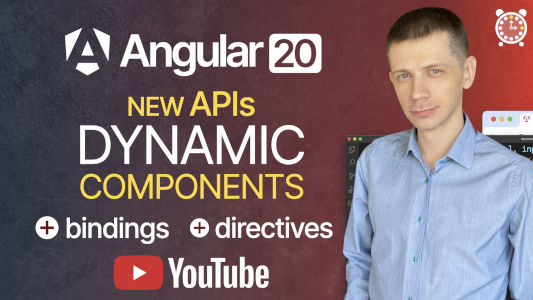
Angular 20 introduces new APIs for dynamic components with support for bindings, two-way bindings, and directives. This update simplifies passing values and connecting signals when creating components dynamically.
The video explains these new features using a clear chat component example.
Tagged Template Literals in Templates
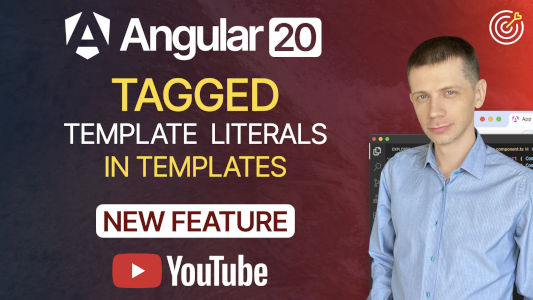
Angular 20 introduces support for tagged template literals in component templates, enhancing flexibility and providing cleaner syntax. Tagged literals can be simple or complex, even nested, making it easier to work with templates.
In this video, I explain how tagged literals work with clear visual explanations.
Angular 19
linkedSignal: a New Kind of Signal
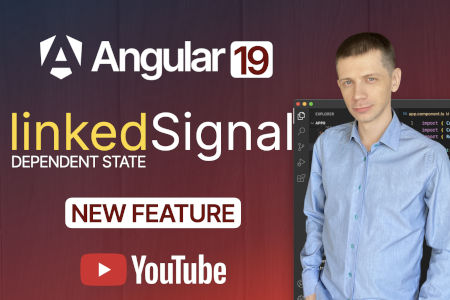
The linkedSignal is a new kind of signal introduced in Angular 19, similar to the computed signal but with important differences. In this video, I explain how it works and demonstrate how to construct a signal chain using three kinds of signals, with an example of an online store page.
Resource API for Async Operations

Angular 19 introduces a new experimental API for managing asynchronous operations effectively. With a reactive approach, we can interact with a remote server (e.g., an API) in a simpler and more intuitive way than before. Check out my step-by-step tutorial with clear, visual, and logical explanations.
Angular Signals
Understand Angular Signals

Angular Signals is a new and efficient way to manage states in applications using a reactive programming style with simple syntax. The new feature allows for changing values and executing code when dependent values change.
Angular Signal Inputs
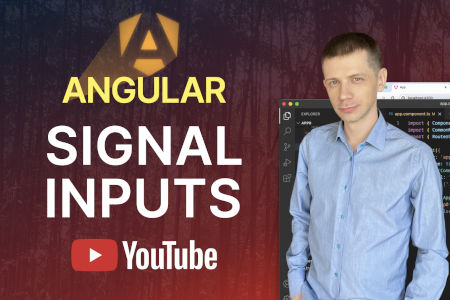
Angular Signal Inputs are a new reactive way to pass data between components based on Signals, offering several advantages over the traditional decorator-based approach: automatic change of dependent values, improved performance, and declarative syntax.
Angular 18
Unified Events for Forms

Unified Events simplify the process of reacting to changes in form controls with greater flexibility and efficiency in a streamlined way. In this tutorial, I explain how the new system works.
Route Redirects with Functions
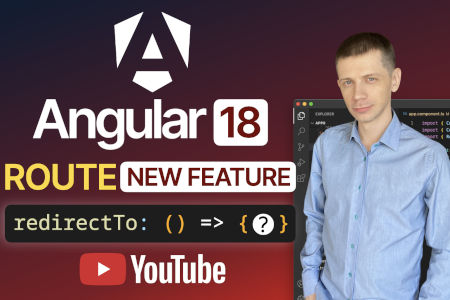
The new version of the framework now allows the use of functions to handle redirects, rather than just strings as before. Dynamic redirects enable consideration of various factors, providing greater flexibility and enhanced maintainability.
Default Content
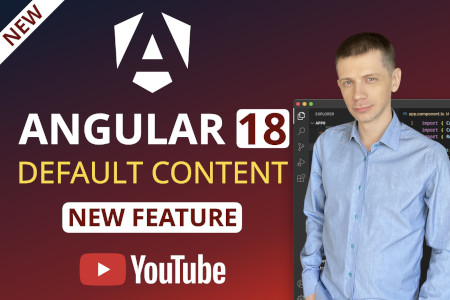
Angular 18 brings a new feature for the ng-content element called default content. It is now possible to specify default content within the tags of this element.
About me
Hello! I'm Igor Sedov, an accomplished and task-driven full-stack developer with over ten years of experience in web development. In addition to my development expertise, I create high-quality programming tutorials on YouTube.
I have a proven track record of delivering innovative and impactful projects across diverse industries, with a strong commitment to achieving high-quality results efficiently. I have held pivotal roles in technology and telecommunications companies, driving organizational development, technological advancements, and product innovation. My experience includes team management and collaboration with suppliers, contractors, and clients.
My goal is to simplify the world of programming, making it accessible to learners of all levels. I create clear, step-by-step programming tutorials featuring an engaging visual style. By successfully using animated infographics and visual design in my videos, I aim to make learning easier, save time, and improve results.
You can find my Angular videos on my YouTube channel. I am currently working on an Angular Tutorial for Beginners that will guide you through the basics of building web applications. Stay tuned for more information on its release!